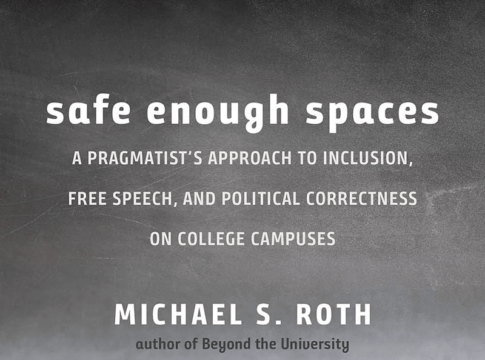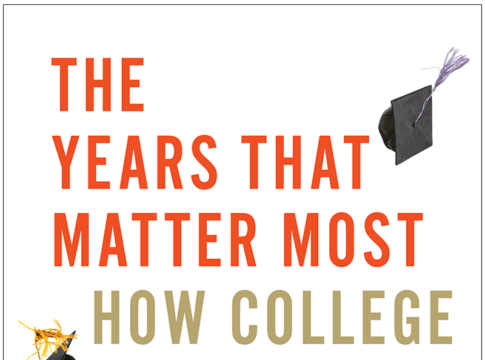
The Coddling of the American Mind:
How Good Intentions and Bad Ideas Are Setting Up a Generation for Failure
by Greg Lukianoff and Jonathan Haidt
Penguin, 2018, $28; 338 pages.
As reviewed by Mark Bauerlein
In spite of egalitarian talk issuing from professors and administrators, college is one of the most stratified enclaves on earth. In recent times, however, an inversion has taken place. It’s not the chaired professors and deans who wield the most intimidation, but the lowly young ones, the undergraduates, particularly if they are members of disadvantaged groups.
Recently at my campus, for instance, a law professor sparked a complaint from students after he mentioned the N-word in class, even though the point he made was entirely academic and the comment occurred during a discussion of hate speech. A few indignant students held a rally, the professor apologized, and the president insisted, “The use of this—or any racial slur—in our community is unacceptable.” But, of course, students at Emory University and every other campus hear the N-word all the time in the music they play. Those usages, however, originate with the students, so college officials don’t think they have any right to intervene.
 Greg Lukianoff and Jonathan Haidt have named such timorous overprotectiveness “the coddling of the American mind.” Their book by that title follows an article they wrote for the Atlantic Monthly in August 2015, which argued that colleges and universities encourage young Americans to “exaggerate danger, use dichotomous (or binary) thinking, amplify their first emotional responses, and engage in a number of other cognitive distortions.” It proved to be one of the most-read and -discussed essays in the magazine’s history. President Barack Obama cited it in a speech on the necessity of “different points of view.” The two authors—Lukianoff, head of the Foundation for Individual Rights in Education, which defends students and faculty against infringements on free speech, and Haidt, an NYU sociologist who has urged more viewpoint diversity on campus—clearly had touched a nerve in the body politic. Their book elaborates on the phenomenon of coddling on campus and reveals its terrible consequences.
Greg Lukianoff and Jonathan Haidt have named such timorous overprotectiveness “the coddling of the American mind.” Their book by that title follows an article they wrote for the Atlantic Monthly in August 2015, which argued that colleges and universities encourage young Americans to “exaggerate danger, use dichotomous (or binary) thinking, amplify their first emotional responses, and engage in a number of other cognitive distortions.” It proved to be one of the most-read and -discussed essays in the magazine’s history. President Barack Obama cited it in a speech on the necessity of “different points of view.” The two authors—Lukianoff, head of the Foundation for Individual Rights in Education, which defends students and faculty against infringements on free speech, and Haidt, an NYU sociologist who has urged more viewpoint diversity on campus—clearly had touched a nerve in the body politic. Their book elaborates on the phenomenon of coddling on campus and reveals its terrible consequences.
In the authors’ view, students didn’t seize the power they now hold; it was handed to them by campus leaders who have been conditioned by therapeutic culture and a “bureaucracy of safety.” The freshmen and sophomores who manage to get controversial speakers disinvited, professors removed from classes, and administrators fired didn’t earn their place through acquisition of higher knowledge and advanced skills. Instead, they were told by their elders, particularly those of an identity-politics cast, that they were already equipped with what they need to act: their feelings, their pain, and their fear.
The idea of trauma exemplifies the “concept creep” that has turned sophomores suffering the ordinary trials of young adulthood into the equivalent of medical outpatients, the authors note. The word used to apply only to physical damage, as in “head trauma.” But in the 1980s, psychologists extended trauma to any form of “significant distress,” and they raised a subjective standard as the test of it. A controversial speaker, a syllabus with readings about war, a professor who is an avowed religious conservative: they are to be judged by the feelings they arouse, not the ideas and evidence they present.
People on campus behave accordingly. At Brown University, for instance, when a debate was staged between one person who declared the United States a rape culture and one person who denied it, students whose trauma responses were “triggered” by the latter debater had the option of visiting a safe space “equipped with cookies, coloring books, bubbles, Play-Doh, calming music, pillows, blankets, and a video of frolicking puppies.”
The subjective standard of what constitutes significant distress is especially damaging when people suffer the “cognitive distortions” mentioned above. When a student finds the very presence of the philosophy scholar Christina Hoff Sommers on the other side of campus terrifying and outrageous, reasoned discussion is impossible. Lukianoff and Haidt analyze such thought distortions through the lens of cognitive behavioral therapy (CBT), which they use as a diagnostic framework. Common cognitive distortions include “emotional reasoning” (when feelings guide one’s judgment of reality), “negative filtering” (highlighting bad experiences, downplaying good ones), and “blaming” (refusing to take responsibility for one’s circumstances). Lukianoff, we are told, has suffered for years from depression, a disorder marked by cognitive distortions, and CBT has helped him through it. He sees similar traits in students who complain of “microaggressions” and draw over-the-top descriptions of adversaries, for instance, terming a campus visitor who argues for traditional gender roles as someone who pushes “violent ideologies that kill our black and brown (trans) sisters,” as one Williams College protester said.
These distressed souls have created a “call-out culture” behind the ivied walls, a place of surveillance and offense taking that stifles free speech and rewards emotionalism. Two chapters, respectively titled “Intimidation and Violence” and “Witch Hunts,” illustrate how this calling-out process works—the identification of a miscreant, the recruitment of protesters, amplification on social media, confrontations, ultimatums delivered to school leaders, and, sometimes, arson and direct physical threats. One wonders how students grinding through organic chemistry, watching slides of Renaissance art, and sneaking beer into dorm rooms have become so partisan and hysterical.
Lukianoff and Haidt identify several contributing factors, including political tensions in America; the proliferation of media, which creates echo chambers; a “national wave of adolescent anxiety and depression”; overprotective parents caught up in “safetyism”; campus officials who encourage dependency (“If anything goes wrong, tell us”); and social-justice activism.
All inarguable factors, as are the antidotes the authors suggest in the final sections, titled “Wiser Kids,” “Wiser Universities,” and “Wiser Societies.” Yes, kids need more free time and less screen time, schools should cultivate “productive disagreement,” and societies should renounce identity politics. And, the authors assert, coddling sets students up for future failure, teaching youths all the wrong ways to handle disputes that they will encounter when they graduate and enter workplaces and the public square. Super-sensitive souls who expect deferential treatment don’t work and play well with others.
That alone—the post-graduation outcomes for snowflake youths—makes the authors’ campaign against coddling a noble and necessary project. But when I hear students heckling a college president as he pleads with them, or watch a 20-year-old shrieking at a professor on the quad, and listen to deans respond with tepid bureaucratese, the authors’ analyses come off as insufficient.
Something deeper and more sinister is happening here, and it has a decidedly political aspect, for the vast majority of protests come from youth on the left, not the right. Lukianoff and Haidt, both moderate liberals, aim to judge impartially, but that makes them hesitate to peer into the dark wellsprings of those intemperate young progressives. They spotlight alt-right figures, but tread too lightly over the totalitarian impulses of undergraduate leftists. They mention Black Lives Matter four times in the book, but without acknowledging the vociferous tribalism that’s communicated on the organization’s website.
This is, in fact, a weak spot of liberal critiques of contemporary extremism. They recognize irrationality on the right, but treat irrationality on the left as an aberration. Liberals like to occupy the middle, and to judge Right and Left with fairness and balance. But in higher education one finds only a handful of amateur provocateurs on the alt-right, the ones who scratch “Black lives don’t matter” on dorm walls and wait for the institution to work itself into a frenzy of self-criticism and indignation. Meanwhile, student-justice warriors are ever on the lookout for outspoken conservatives, deans run orientation sessions on “privilege,” bias-response teams pounce on an insensitive Halloween costume, and activists suppress research with findings that cross progressive axioms.
It seems clear that coddling has promoted this climate, but student soldiers of the Left like where they are. They believe in their illiberal mission; it intoxicates them, and college leaders haven’t the courage to resist. And the sensible recommendations of Lukianoff and Haidt won’t impress them.
Mark Bauerlein is professor of English at Emory University.
This article appeared in the Spring 2019 issue of Education Next. Suggested citation format:
Bauerlein, M. (2019). Protecting College Students from Uncomfortable Ideas: On campus, feelings and fear triumph over thought. Education Next, 19(2), 76-77.





